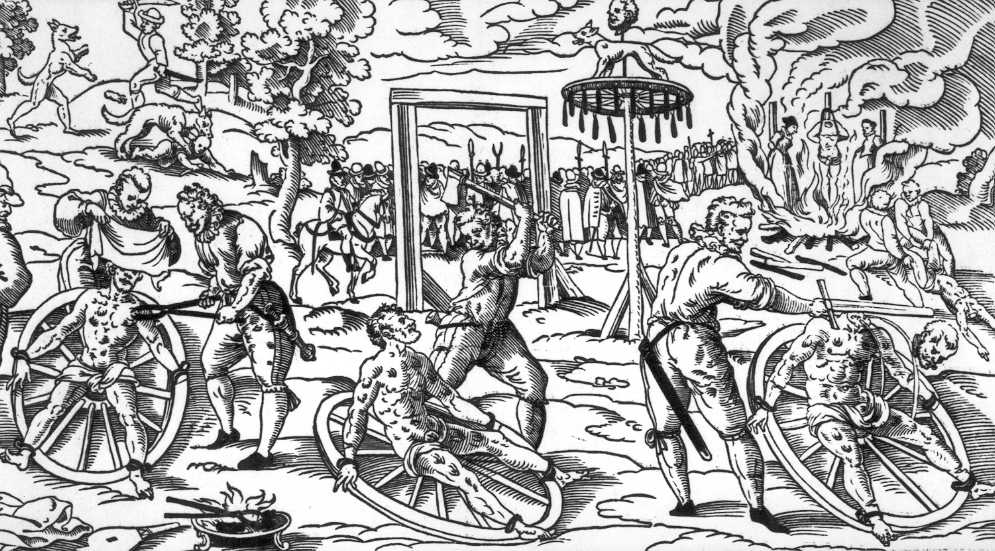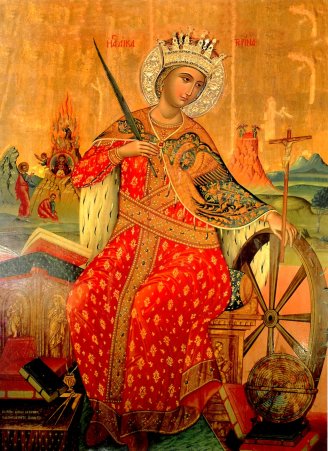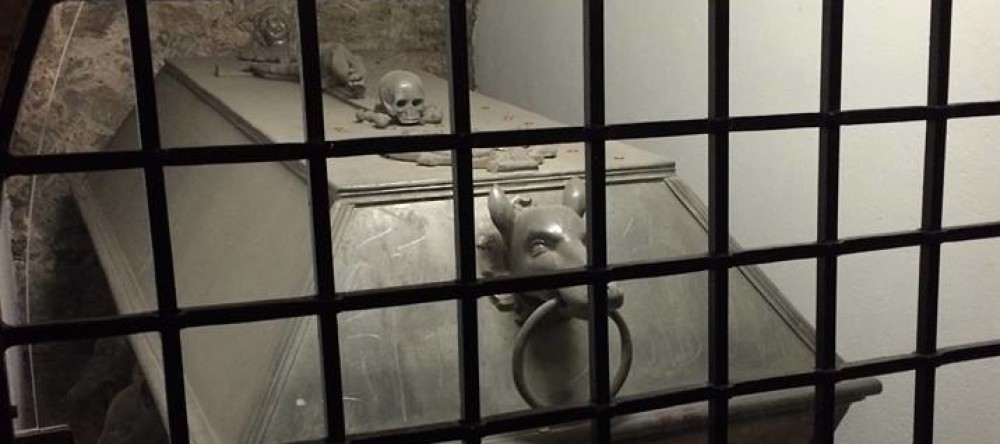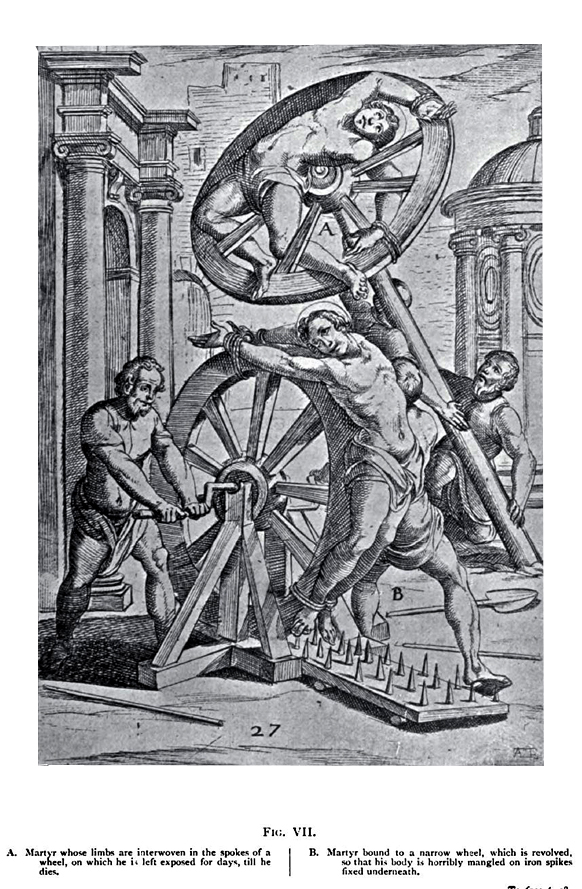
A woodprint depicting the execution of Peter Stumpp, a famous convicted werewolf, on the wheel in Cologne.

An icon of St. Catherine, with her wheel. Note the 2 images of Mt. Sinai in the background: Moses at the burning bush on the left and the later fortress-monastery on the right.
One of the most popular women of the Middle Ages, St. Catherine was thought to have been a 4th century philosopher in Alexandria who was martyred in the Great Persecution of Diocletion. Her biography indicates she was tortured on the wheel and finally beheaded; her relics were taken by “angels” (a euphemism commonly used to mean monks) to the monastic settlement on Mount Sinai. A monastery-fortress was built there by the Byzantine emperor Justinian in the 6th century; extremely rare and priceless icons and manuscripts have survived there because it was so remote. Her feast day, on November 24 or 25 (in various places), was one of the most popular holidays of the year. It was said that if there was snow on St. Catherine’s day, it would be a hard winter. If an unmarried girl wanted a husband or a married woman wanted to be rid of a bad husband, she should fast on St. Catherine’s day and the saint would either produce a husband or reform/dispatch him as required.
Because of St. Catherine’s association with the wheel, the “St. Catherine’s wheel” firework is probably the first association modern people think of. But in the Middle Ages the use of the wheel as an instrument of torture was a frequent sight in town squares across Europe. People would be tortured on the wheel in several ways but the worst — though least known today — was lacing the broken limbs of a victim through the spokes of the wheel and then spinning the victim to induce nausea as well as pain.
Because crucifixion was no longer practiced in Europe, artists had no models to paint from when depicting the crucifixion of Christ. It was the victims of the wheel that were most often used as models for depicting crucifixions, especially the two thieves on either side of Christ: the contortions of the crucified thieves display the positions commonly seen in victims of the wheel rather than what we now know to be the positions of victims of crucifixion. So, in fact, when we see medieval or Renaissance paintings of the crucifixion scene, we are often actually seeing depictions of contemporary victims of the wheel used as models by the artists.
There is no shortage of books about medieval torture, describing the wheel as well as other instruments used to provoke confessions of guilt from the accused. Although we, as modern people, are not surprised that people accused of outlandish crimes in the Middle Ages — such as being a werewolf or a witch — would confess simply to stop the torture it was the presumption of Classical Roman and medieval people that people subjected to torture would never lie; this must still be the presumption behind the use of “enhanced interrogation,” I think.

